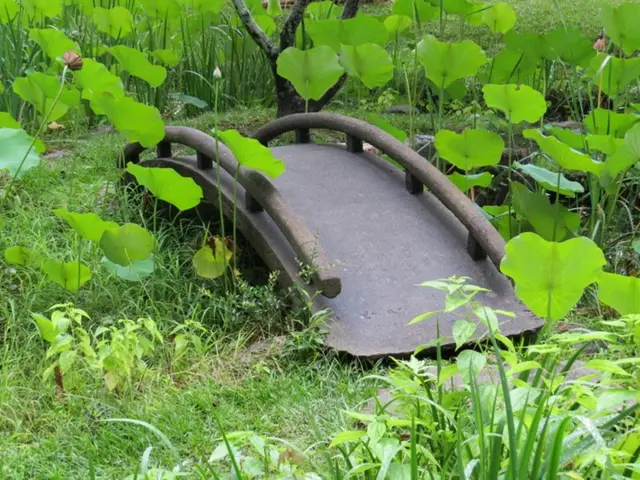Exploring Saxony's Lignite Legacy: A Federal Project Unveils Records
Embark on an immersive journey through Saxony's rich lignite industry history, as a comprehensive documentation of related monuments has been unveiled as a result of a federal project. Now readily available online via the KuLaDig portal, these meticulously recorded remnants offer a captivating account of the industry that transformed the region.
A Striking Monument's Tale
One noteworthy discovery from this extensive archive is the "Onion Woman and Miner" monument, which stands proudly within one of the royal lignite works. This striking sculpture depicts a miner and his wife, preserved in time, offering a poignant vignette of life within the industry.
Preserving the Impact of Mining's Past
This exhaustive inventory, conveniently accessible through the LfD's various online platforms, serves as a striking reminder of the profound influence mining has had on the region and its society. As mining continues to shape modern-day Dresden and beyond, its legacy remains a significant part of Saxony's heritage.
The preservation of these structures, however, requires thoughtful concepts, funding, and individuals who recognize the historical and cultural value of these buildings.
Dive into KuLaDig
Explore the online KuLaDig portal to delve deeper into this collective archive of Saxony's lignite industry history. Selected objects are also available in two LfD publications, providing engaging insights into the lignite works, pits, coal bunkers, and monuments that have shaped the area's landscape.
The Wider Perspective
This federal project is not a solitary endeavor. Teams are also engaged in documenting the lignite industry in other federal states, such as Brandenburg, Saxony-Anhalt, and North Rhine-Westphalia. Collectively, this effort is a significant first, marking the digital provision and mapping of information on an entire industrial sector across various regions, shedding light on the transformative role mining has played in each of these regions.
Sources
Enrichment Data:
The extensive archival documentation on Saxony's lignite industry, as well as its counterparts in Brandenburg, Saxony-Anhalt, and North Rhine-Westphalia, reveals the historical and ongoing operations of lignite mines in these regions. The following are the key points to consider:
Scope and Importance
Historical Context
- North Rhine-Westphalia: This region is home to Europe's largest lignite mines, like the Hambach and Garzweiler mines. While not mentioned in the provided sources, the Hambach mine has been active since 1978 and is scheduled to close in 2029. Similarly, the Garzweiler mine, which has been operational since 1940, is slated to close in 2030.
- Saxony and Brandenburg: These regions also boast significant lignite deposits and have a history of mining operations impacting the country's energy production. Despite not having detailed information from the provided sources, lignite was undoubtedly a vital part of Germany's industrial history.
Environmental and Economic Consequences
- Environmental Impact: The lignite industry in these regions has raised concerns surrounding environmental degradation. The Hambach Forest, for example, has been the subject of substantial activism due to proposed mine expansion and its potential impact on the remaining forest.
- Economic Importance: Lignite has played a crucial role in Germany's energy production, primarily due to proximity to mining sites and the use of lignite in nearby power plants.
Accessing Information Online
To gain a deeper understanding of the lignite industry in these regions, the following online resources are available:
- Global Energy Monitor (GEM.wiki): This platform provides up-to-date information on coal mines across the globe, including data on production, reserves,and historical production levels.
- Wikipedia: This online encyclopedia offers a general overview of Germany's economy and its lignite mining industry, as well as insights into the historical development of lignite deposits and their current use in power plants.
- Academic Journals and Research Articles: Acclaimed journals like "kritisk etnografi" (Swedish Journal of Anthropology) may provide more in-depth ethnographic studies on the environmental and social impacts of lignite mining in Germany.





